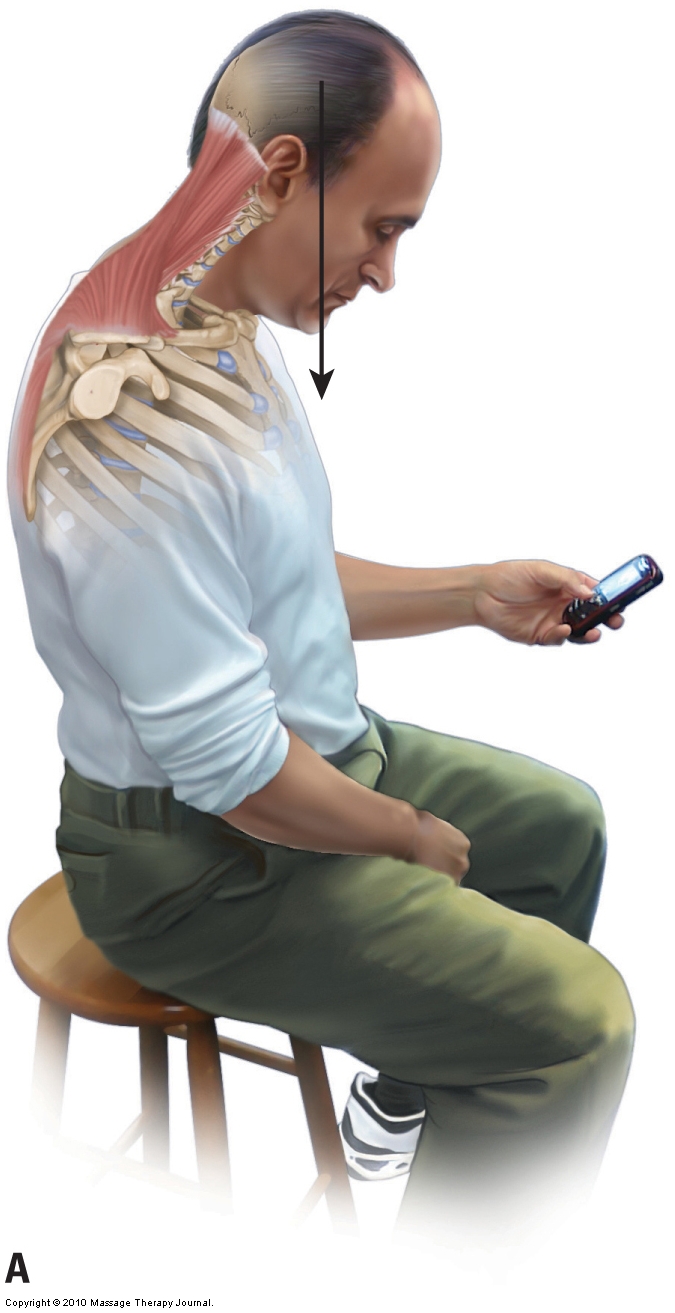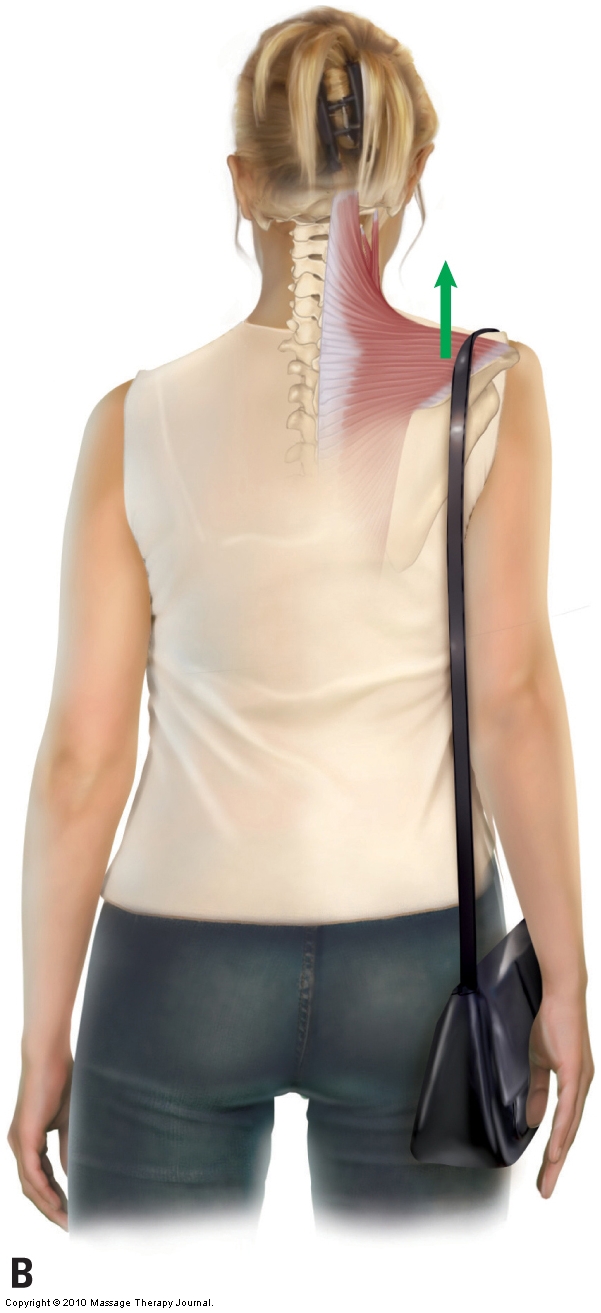The most common form of headache is a tension headache, which is caused by excessive pulling (tension) force of tight muscles in the neck that exert tension on their soft tissue attachments on the scalp and periosteum of the skull.
Therefore, a tension headache is a consequence of a neck problem, essentially due to tight muscles of the neck.
The Latin / medicalese term for headache is cephalgia, which literally means head pain (“ceph” = head; “algia” = pain).
The muscles that are most often implicated in a tension headache are the posterior extensor muscles of the cervicocranial region (neck and head) such as the upper trapezius, semispinalis capitis, splenius capitis, levator scapulae, and the suboccipital muscles because they often have to compensate for an imbalanced posture of the head when the client has forward head posture (often part of a larger postural dysfunctional pattern known as upper crossed syndrome, described by Czech physiologist Vladimir Janda). Forward head posture is usually the result of postures that involve working down in front of our body. Nowadays, this is often due to the excessive use of digital devices) (Fig. 22).

Figure 22. Forward head posture, often due to the use of digital devices, places a stress upon the posterior extensor musculature of the cervicocranial region to support the head in the forward imbalanced posture. Courtesy of Joseph E. Muscolino. Art work by Giovanni Rimasti. Originally published in the massage therapy journal (mtj): seven keys to healthy neck posture, spring 2010 issue.
Carrying a bag on the shoulder is another common cause of tight extensor musculature of the neck and head. The upper trapezius and levator scapulae muscle isometrically contract to hold the scapula/shoulder girdle in the elevated posture needed to prevent the bag from sliding off the shoulder (Fig. 23).

Figure 23. Carrying a bag on the shoulder requires constant isometric contraction of the upper trapezius and/or levator scapulae to prevent the bag from sliding off the shoulder. Courtesy of Joseph E. Muscolino. Art work by Giovanni Rimasti. Originally published in the massage therapy journal (mtj): seven keys to healthy neck posture, spring 2010 issue.
Chronic use/overuse* of the musculature of the region can cause pain, usually felt in the suboccipital region, often unilaterally, but sometimes bilaterally. As this pain continues, the body responds via the pain-spasm-pain cycle, tightening all the muscles in the region. Often, all of the neck muscles as well as the muscles of the scalp, such as the occipitofrontalis, become hypertonic, which compounds the problem, spreading the pain to the occipital region and then in time to the frontal bone region of the head (forehead). As tension headaches become chronic, they tend to become more severe. Even though tension headaches are mechanical in nature, and not vascular headaches such as migraines and cluster headaches, tension headaches can become a trigger for clients to then experience migraines.
*Author and educator, Leon Chaitow, is fond of saying: “use/overuse/misuse/abuse” to describe how muscular/myofascial overuse problems lead to dysfunctional pain patterns.
Note: Treatment Considerations in Brief for Tension Headaches
Soft tissue manipulation, in other words manual therapy massage, as well as stretching and moist heat, all help to loosen and relax the tight musculature/myofascial tissue of the cervicocranial region that causes a tension headache. It is important to not just address the posterior extensor muscles of the neck but to also address the occipitofrontalis of the scalp. Given that joint dysfunction is often involved with muscular/myofascial tissue conditions, joint mobilization (arthrofascial stretching) is also likely needed as a part of the treatment regimen. This is especially true for chronic cases of tension headaches. If the tight musculature that precipitates the tension headache is following from a postural dysfunctional pattern (likely forward head posture as part of upper crossed syndrome), then that dysfunctional pattern must be addressed for any lasting and meaningful healing to occur.
Of course, with any treatment to the neck, there are always precautions and contraindications to consider.
Note: This blog post article is the ninth in a series of 10 posts on
Common Musculoskeletal* Conditions of the Neck
The 10 Blog Posts in this Series are:
- Fascial Adhesions (and an introduction to musculoskeletal conditions of the neck)
- Hypertonic (tight) musculature
- Joint dysfunction
- Sprains and strains
- Pathologic disc conditions
- Osteoarthritis (OA)
- Thoracic outlet syndrome (TOS)
- Forward head posture
- Tension headaches
- Greater occipital neuralgia
(*perhaps a better term is “neuro-myo-fascio-skeletal”)


